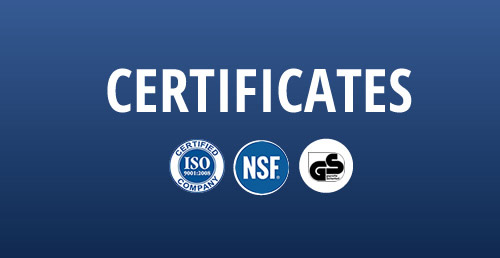double end studs
Understanding Double End Studs A Comprehensive Overview
Double end studs, also known as double-ended bolts or double-ended screws, are essential components in various mechanical and structural applications. These fasteners are characterized by their threaded ends on both sides, commonly used to connect multiple components securely. In this article, we will explore the features, applications, and advantages of double end studs, shedding light on their importance in various industries.
Features of Double End Studs
Double end studs are typically manufactured from high-strength materials such as steel, stainless steel, and other alloys. The key feature of these fasteners is their dual-threaded design, which allows them to be inserted into two separate parts simultaneously. This unique structure provides a reliable means of joining components where conventional bolts might not suffice.
The threads on double end studs can come in various configurations. They can be coarse or fine, depending on the specific requirements of the application. Additionally, the length of the stud can vary, providing flexibility for use in different scenarios.
Applications of Double End Studs
Double end studs find applications across a wide range of industries
1. Construction In the construction industry, these fasteners are crucial for securing beams and columns, ensuring structural integrity. They are often used in applications where space is limited, allowing for a more compact design.
2. Automotive In automotive manufacturing, double end studs are used to join different parts of a vehicle, such as the engine to its mounting frame. Their strength and reliability are vital in ensuring safety and performance.
3. Machinery Assembly Various machinery uses double end studs to connect components such as gears, shafts, and casings. Their ability to provide a strong, torque-resistant connection makes them an ideal choice for machines that experience high stress.
double end studs

4. Aerospace In the aerospace sector, double end studs help fasten critical systems in aircraft. The lightweight nature of certain materials used in double end studs is particularly advantageous in this industry, where reducing weight is crucial.
5. Marine Applications The marine industry also employs double end studs for securing parts on boats and ships, where durability against corrosion is essential. Stainless steel double end studs are especially popular in this field.
Advantages of Double End Studs
The use of double end studs offers several advantages
- Versatility Their ability to accommodate various applications makes double end studs highly versatile. They can be used in both high-stress environments and more benign settings.
- Ease of Installation With two threads, double end studs can simplify installation, as they allow for easier alignment of pieces being joined. This can save significant time during assembly.
- Strength and Stability Double end studs provide a strong connection that can withstand significant forces, ensuring that components remain securely fastened even under stress.
- Space-Efficiency Their design allows for joining components in tighter spaces, making them ideal for applications where conventional bolts are impractical.
Conclusion
Double end studs play a crucial role in various sectors, offering a reliable and efficient means of fastening components together. Their unique design, along with the materials used in their construction, makes them indispensable in applications ranging from construction to aerospace. As industries continue to evolve, the demand for innovative fasteners like double end studs is expected to grow, further highlighting their importance in engineering and design. Understanding their features, advantages, and applications can aid engineers, manufacturers, and construction professionals in selecting the right fasteners for their projects, ultimately contributing to the safety and integrity of their structures and products.
-
Weatherproof Plastic Expansion Anchors for OutdoorNewsJun.06,2025
-
Sustainability in the Supply Chain: Eco-Friendly TEK Screws ProductionNewsJun.06,2025
-
Load-Bearing Capacity of External Insulation FixingsNewsJun.06,2025
-
Double Head Bolts: Enhancing Efficiency in Industrial MachineryNewsJun.06,2025
-
Corrosion Resistance in Chipboard Screws: Coatings for Wholesale DurabilityNewsJun.06,2025
-
Butterfly Toggle Bolts : Enhancing Structural ResilienceNewsJun.06,2025
